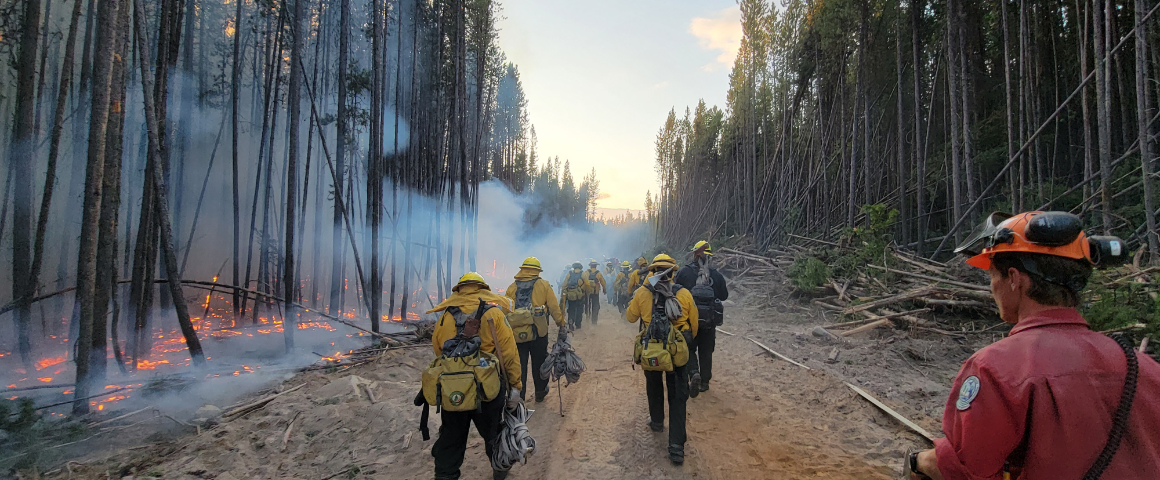By D.G.
Summer in the western provinces of Canada is now synonymous with wildfire. As the climate crisis continues, the people of British Columbia and Alberta are now forced to reckon with Ottawa’s inaction on climate and on the rights of Indigenous peoples during the prolonged fire season. Before the summer of 2023 had even officially begun, Vancouver was enveloped by a stream of smoke emanating from the Chehalis Lake fire to the east of the city. Consuming an 800-hectare area north of the lake, the Chehalis Lake Fire now serves as a harbinger of what the predicted heat waves of the summer may have in store.
In contrast to the bleak outlook for the summer, wildfire has not always been associated with disaster. Ecologically, fire plays an important role by destroying dead plants and clearing areas for new life to sprout. Fire also assists in seeding nutrients like potassium, calcium and magnesium into the ground by burning leaf litter and debris which would not otherwise be bioavailable. Fires occurring in healthy habitats do not burn as long or as hot, which allows subsurface seeds and roots to flourish after the fire has consumed decaying leaf litter as its primary fuel and gone out. Indigenous peoples of North America have long recognized the importance of fire, and many cultural traditions are based around triggering controlled fires to clear brush and improve the fertility of soil to aid in crop yields. Fire in the Indigenous context is not disastrous but is an element of the natural cycle of the forest ecosystem.
The historical and ongoing genocide of the Indigenous peoples of North America cannot be excised from the story of destructive wildfire. As the expansion of colonialism waged war on Indigenous sovereignty, the ability for Indigenous peoples to maintain cultural practices similarly declined. Fire in the context of the prevailing profit-centered system now finds much more vulnerable flora in monocultures which have become prevalent both in agricultural areas as well as in second-growth forests. In contradictory attempts to maintain economic growth while mitigating the dire effect on the environment, Canada’s carbon offset programs incentivize corporations to plant trees to “offset” their pollution. The trees planted under these schemes are pinnacles of so-called capitalist efficiency – they are densely packed clusters of single species which are extremely vulnerable to fire but are cheap to plant and fulfil legal requirements. Their vulnerability stands in contrast to highly resistant, biologically diverse natural forests whose variety of flora resists uncontrollable spread of fire and dampens its severity substantially.
The combined factors of the suppression of Indigenous cultural practices and promotion of monocultural forestry contributes to a situation where a single spark spells devastation for entire regions. If the federal and provincial governments were serious about protecting communities from the direct danger of fire and the health risks associated with smoke, Indigenous communities would be returned the authority to remove corporate interests from their land and manage the resources traditionally which contributed to healthy, sustainable ecosystems which dominated prior to colonization. Instead, the government of Canada continues to allow the rampant abuse of Indigenous land and offers half-measures which, while looking good from a public relations perspective, actively contribute to the worsening conditions during the fire season. The consequences of the Canadian state’s resistance to Indigenous sovereignty should be remembered each time acrid smoke burns our eyes and fills our lungs.
[Rebel Youth]
Get People’s Voice delivered to your door or inbox!
If you found this article useful, please consider subscribing to People’s Voice.
We are 100% reader-supported, with no corporate or government funding.




